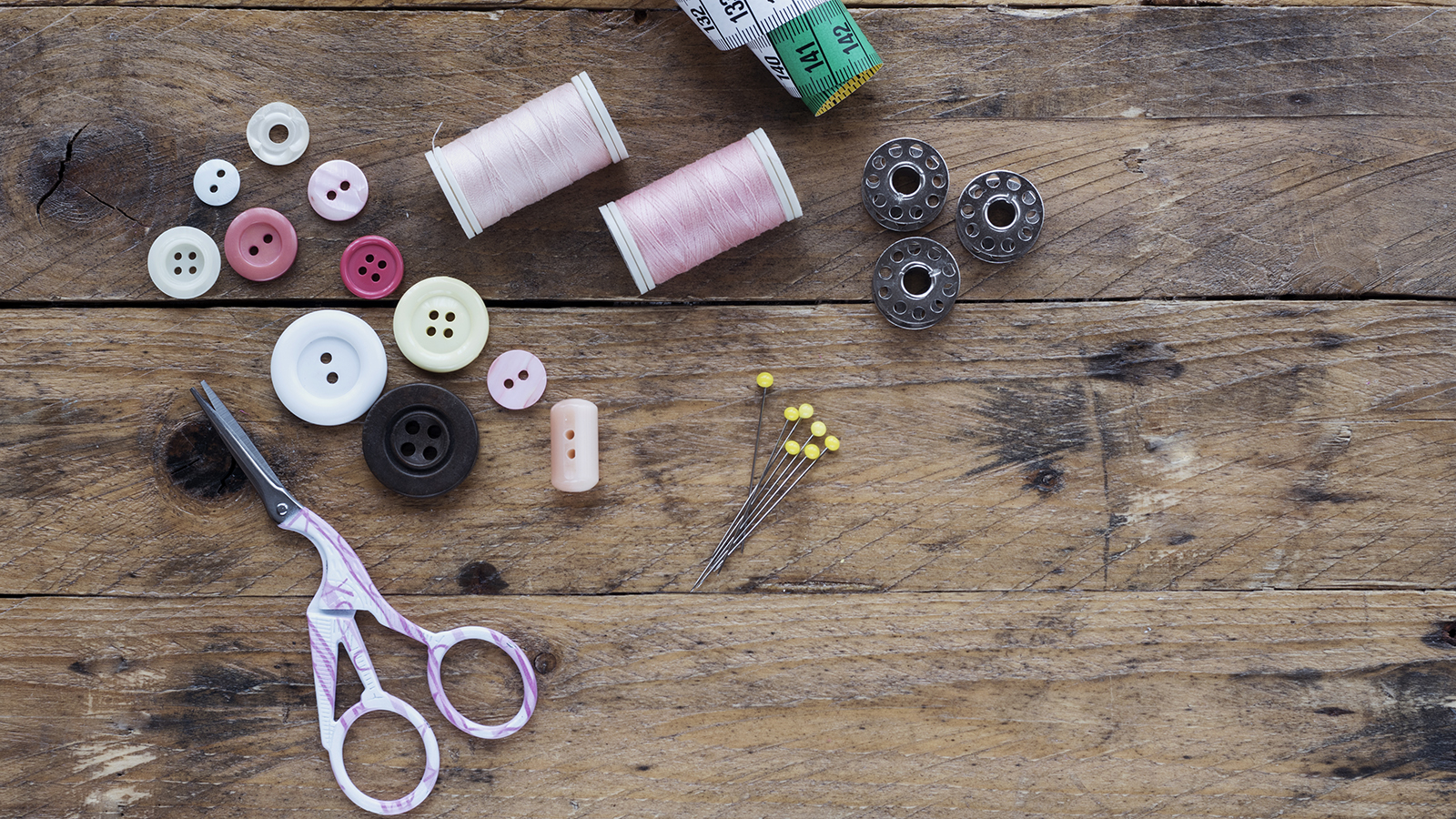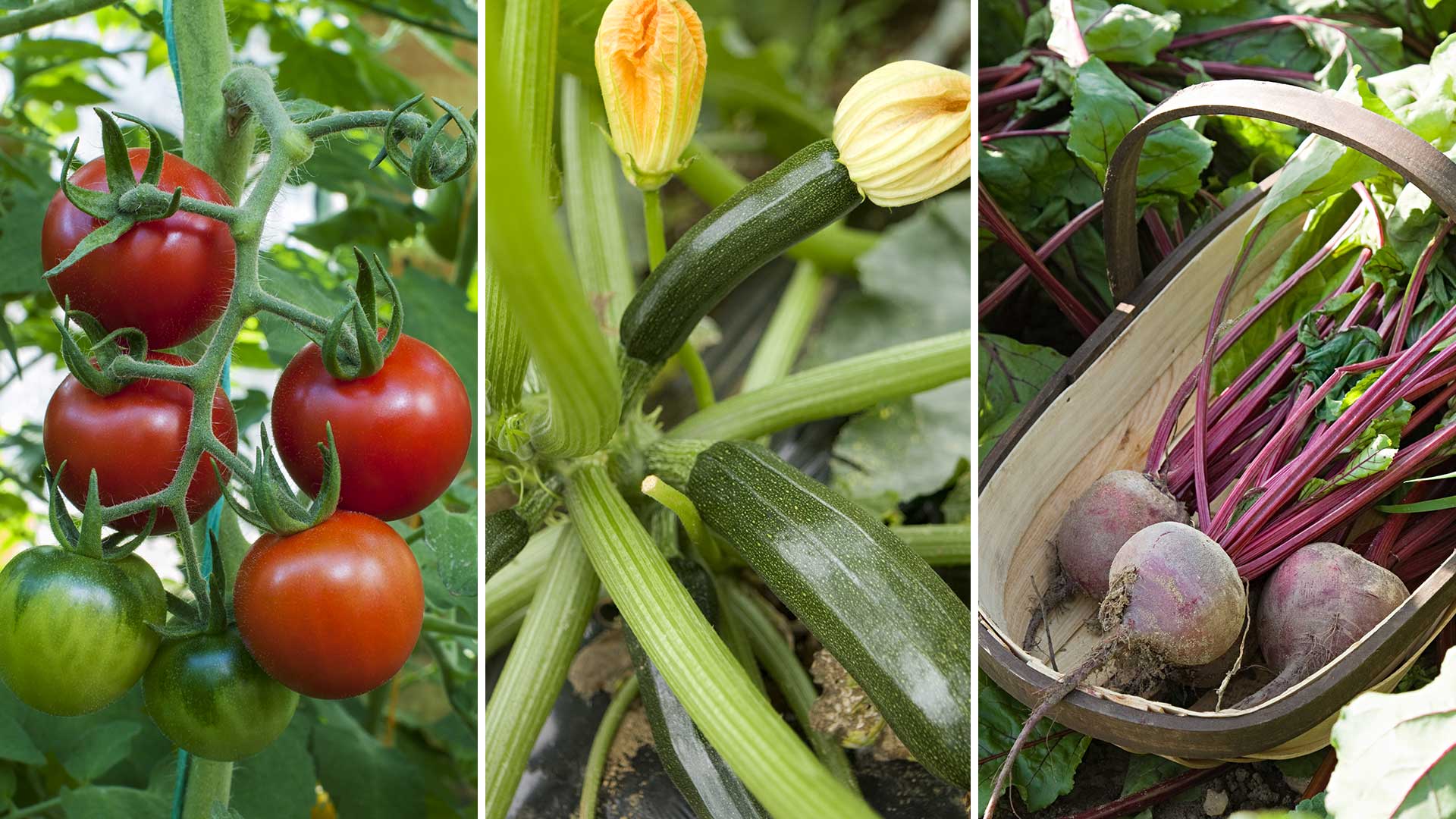20 easy sewing projects you can make on a sewing machine in less than 30 minutes
These quick and easy sewing projects can all be completed within 30 minutes, so you can get your craft fix without it taking all day


Want to sew but can’t find the time? These quick and easy sewing projects can all be completed within 30 minutes, so you can get your craft fix without it taking all day.
Soon, you’ll be stitching up a bag in your lunch break or creating a set of coasters in an evening.
If you’ve just bought a sewing machine and are looking for some beginner-friendly makes, have a go at our speedy projects. They don’t require one of the best sewing machines for patterns or complicated techniques, so it’s a great way to build up your confidence to tackle more technical designs in the future.
- Best sewing machines for beginners: 5 machines to get you started with the hobby
- How to thread a sewing machine without any hassle
- Best sewing machines for quilting: 5 picks for making the most thoughtful gift for loved ones
20 easy sewing projects to whizz through
1. Sew a set of rope baskets for some stylish storage
This impressive project might look hard, but it’s super simple to accomplish. All you need for this is some washing line cord or cotton rope, some matching or contrasting sewing thread and your machine set to a wide zigzag stitch. Invest in a denim needle to get through the thick rope if you plan on making a couple.
Coil the rope around itself to create a tight spiral with the first 30cm of cord. Pin through the sides to secure and then stitch between the pieces of cord to sew them together, following the spiral around as you sew. Continue stitching the cords together while coiling the cord around, keeping the base of the basket flat on the bed of your sewing machine.
To create the sides of the baskets, tilt the stitched base at a 90º angle and continue stitching. Carry on until you run out of cord and simply tuck the end inside the bowl and stitch in place.
2. Stitch a set of coasters for your coffee break
Use up leftover patterned fabric scraps to recreate these colourful coasters. For an applique project like this, add some Bondaweb to your sewing stash – it’s a must-have for most sewers and you won’t regret it. Make sure you have some matching thread and plain fabric, too, for this quick-sew project.
Sign up for the woman&home newsletter
Sign up to our free daily email for the latest royal and entertainment news, interesting opinion, expert advice on styling and beauty trends, and no-nonsense guides to the health and wellness questions you want answered.
Cut out two squares measuring 12x12cm from plain fabric. Fuse the Bondaweb to the wrong side of the patterned fabrics, draw a coffee shape on the paper backing and then cut out. Remove the paper backing and apply the applique to one of the plain squares. Straight stitch all the way around the cup motifs in a contrasting thread to secure.
Pin the squares together with right sides facing and sew around three sides with a 1cm seam allowance. Turn right sides out and press flat. Turn the open side under by 1cm and pin. Straight stitch all the way around the edge of the coaster about 5mm from the edge.
3. Make some luggage tags for your next holiday
If you struggle to spot your luggage while it’s gliding about the baggage carousel, you need one of these pretty labels to stand out from the crowd. We’ve used some map canvas fabric to make ours sturdy.
Using our image as a guide, cut out four luggage-tag shapes measuring about 8cm x 12cm. Pair two together with right sides facing and stitch with a 1cm seam allowance, leaving a small gap for turning through. Turn right sides out, turn the gap in by 1cm and top stitch all the way around the edge. This is the back piece.
Repeat for the other two pieces and then score a cross in the centre. Turn the cut edges inside and top stitch to create the front piece.
Pair the front and back together and the topstitch around three sides to form the label. Cut a piece of white card to fit inside the holder.
To make the strap, cut a piece of fabric measuring 5cm x 25cm, press in half lengthways with right sides together and sew along the edge with a 1cm seam allowance. Turn right sides out and topstitch along the edges.
Now it’s time to practice a new technique if your machine has a buttonhole stitch. Follow your manual to sew a buttonhole on the top of the luggage tag. Slip the strap through and tie the label to your suitcase.
4. Sew a glasses case to keep your specs safe
Store your glasses or sunnies in one of these cute cases, perfect for stashing them away safely in your handbag. All you need is a piece of patterned fabric measuring 18cm x 21cm and lining fabric measuring 21cm x 21cm, matching sewing thread and a snap fastening if you want to seal the case.
Take the outer and lining fabric and pin together along a matching edge with right sides together. Sew together with a 5mm seam allowance, open out the fabric and press the seam towards the lining.
Fold the case in half lengthways with right sides facing and press. Pin the raw edges together and sew all the way around with a 5mm seam allowance, making sure to leave a small gap for turning through along the lining. Turn the case right sides out and press. Turn the edges of the opening under by 5mm and topstitch closed.
Push the lining down inside the outer fabric until you have a 1.5cm cuff of contrasting fabric at the top. Add a snap fastening in the centre of the contrast cuff to keep the case closed.
5. Personalise a plain towel with your initials
Love a matching bathroom set but hate getting the towels mixed up? Banish the confusion with this initial towel make.
Simply fuse some Bondaweb to the reverse of some patterned fabric. Draw out your letter of choice on the paper backing and cut out. Remove the paper and apply the letter to the towel. Use a short and wide zigzag stitch to sew around the edge of the letter to secure it in place.
6. Sew a handy tote bag for your next shopping spree
This snazzy shopper is so speedy to stitch up and the perfect replacement for a plastic bag you’d usually get in the shops.
Cut two large rectangles from some patterned fabric, pin together with right sides facing and straight stitch around three of the sides with a 1.5cm seam allowance. Trim the corners and turn right sides out.Turn the top edge down by 1cm and then again by 2cm. Pin and sew all the way around the top edge.
To make the straps, cut two strips from the fabric, fold in half lengthways and stitch along the raw edges with a 1.5cm seam allowance. Turn right sides out and press. Pin to the top of the bag and then topstitch in place to secure. Now you’re ready to shop!
7. Stitch a set of lavender sachets to freshen up your drawers
These simple sachets are the perfect new-house gift and they can be filled with whatever you like to add different fragrances to your drawers or wardrobe.
Cut out two 15cm squares from patterned fabric and pin together with rights sides facing. Sew all the way around with a 1cm seam allowance and leave a 5cm gap on one of the sides. Turn right sides out and fill the pouch with your dried lavender or an alternative. Sew the gap closed and repeat. Stack into a set of four and tie with ribbon as a gorgeous gift.
8. Add a floral binding to spruce up a set of flannels
You can buy ready-made bias binding in most sewing stores or haberdasheries. For this make, we’ve used some floral Liberty-print binding to make these boring flannels pop.
Simply sandwich the edge of the flannel in the bias binding and pin in place. Topstitch with a matching thread, making sure to tuck the end of the binding under to hide the raw edges. If you’re struggling to tackle the corners, take a look at our how to use a sewing machine [LINK] guide for an in-depth tutorial.
9. Make a face mask to feel safe and stylish
Have fun with your fabric choices for this easy-sew and don’t forget to pick up 50cm of elastic next time you’re at the supermarket.
Cut out two squares of fabric measuring 20cm. With right sides together and edges aligned, stitch two of the opposite sides with a 1cm seam allowance.
Cut the elastic in half; you can reduce or increase the length to fit your ears. Take one piece of elastic and position it in between the stitched squares. Line up the ends with the unstitched edge and against the stitched sides. Pin in place and then stitch the edge of the square with a 1cm seam allowance.
Repeat for the other piece of elastic and side, leaving a 5cm gap in the centre for turning through. Turn the mask right sides out and slip stitch the gap closed with a hand sewing needle. Press and then fold as many pleats into the mask as needed to fit your face. Once pleated, pin and top stitch the sides to secure.
10. Sew some cushions for your sofa
Sewing a cushion is one of the easiest projects to start stitching. It’s the perfect beginner make that gives you a sense of accomplishment purely for the progression from a simple square style to embellished designs with an assortment of closures once you’ve gained confidence.
For these envelope-opening cushions, you’ll need a piece of patterned fabric cut into a 45cm square and two rectangles measuring 30 x 45cm, plus 2m of readymade fabric-covered piping.
Take one of the rectangles and turn the one long edge under by 1cm and then another 1cm. Straight stitch to secure and repeat for the other rectangle. Overlap the pieces so they form a 45cm square. With your machine set to the longest straight stitch, tack the overlapping edges together.
Pin the two squares together with right sides facing and the piping sandwiched between the layers so that the raw edges are aligned. Stitch around the sides with a 1.5cm seam allowance. Unpick the tacked edge on the back pieces and turn right sides out.
For some extra personalisation, we’ve blanket stitched a felt letter to the front of each cushion.
11. Stitch a pincushion to add to your craft stash
Here’s another scrap-busting project that will give you the chance to try out some patchwork techniques. You’ll need some fabric and stuffing before you start making this sewing project.
Cut out 17 strips measuring 2.5cm x 12.5cm from patterned fabric and a rectangle of plain fabric measuring 12.5cm x 17.5cm. Add an applique butterfly to the top of the plain rectangle and zigzag stitch in place, if desired.
Sew 11 of the strips together along the long edges with a 5mm seam allowance to create the backing. Repeat with the other strips to create the pocket, turning the top edge under by 1cm and then another 1cm. Topstitch in place.
Layer the backing right sides up, with the pocket followed by the plain rectangle right sides down, making sure the hemmed edge of the pocket is in the centre. Pin and sew all the way around, leaving a 5cm gap for turning on one of the edges. Turn right sides out, fill with stuffing and slip stitch the gap closed.
12. Sew an apron to keep clean in the kitchen
A kid-size apron that can be easily upscaled so the whole family can have a matching set. Just increase the measurements for an adult variation. Add some webbing to your fabric stash, too, as a quick and easy strap alternative.
Cut out a 45cm x 54cm piece of fabric and fold in half widthways. Cut off the top corner along the edge, measuring 13cm on the short side and 16cm on the long side.
Open the fabric out and turn the top, bottom and side edges under by 1cm. Topstitch in place and add some pom-pom trim to the bottom edge if you fancy. Repeat for the underarm edges, folding a further 3cm and sewing as close to the edge as possible to create a channel for the strap.
Thread a length of webbing through the underarm channel to form the neck and back ties. Add a rectangular pocket to the centre front if you wish.
13. Vamp up a denim jacket with some appliques
Upcycling clothing is a great way to transition into sewing garments. Simply arrange some readymade applique shapes or letters on the back of a jacket and straight stitch in place. This might be a good occasion to lower your feed dogs if your machine has this function and free-motion embroider the applique in place. It will give you a much smoother stitch for going around fiddly corners and curves.
Make a fabric plant pot for your greenery
Fabric baskets are all the rage at the moment for styling up your house plants and flowers. This speedy project transforms a dull plant pot with a kitsch cover-up, making it a great gift for friends and family.
Cut out a total of four 25cm squares from two patterned fabrics. Pair up two different patterned fabrics and sew together with right sides facing along one edge with a 1cm seam allowance. Repeat for the other two pieces.
Place what are now rectangles right sides together with fabrics and seams matching. Pin and sew all the way around the edge with a 1cm seam allowance, leaving a 5cm gap along the bottom of the lining fabrics.
To box the corners, pull each corner together so the seams meet and mark 5cm in from the point. Stitch across the corners and trim away the excess. Turn right sides out and push the lining into the outer fabric. Turn the top edge down by about 3cm and place your plant inside.
15. Sew a drawstring backpack for your gym or swim kit
Get the kids to help with this simple project as it makes the perfect PE kit backpack. All you need is some brightly coloured fabric, matching cord and some eyelets.
Cut out two rectangles measuring 35cm x 45cm. Pin and stitch the right sides together with a 1cm seam allowance around three sides, making sure to not stitch the top 5cm of the sides or top of the bag.
Turn right sides out and turn the unstitched sections of the sides under by 1cm and topstitch in place. Along the top edge, press a 5mm and then 3.5cm channel, straight stitching as close to the edge as possible.
Thread some pink cord through the channels. Fix a large eyelet to each bottom corner of the bag and thread the cord through. Tie the cord ends in knots to keep in place.
16. Stitch up a laundry set for wash days
This simple design is a more complex version of the drawstring-bag tutorial. Before stitching any of the pieces together, take the front rectangle and applique a series of letters using Bondaweb and a zigzag stitch. We’ve chosen to embellish ours with the words lights and darks, to make those tiresome wash days all the easier. And remember to omit the eyelet instructions.
17. Quilt a cover for your iPad or laptop
Once you’ve made the patchwork pincushion, have a go at making a quilted table case to flex your sewing muscles. You’ll need a couple of patterned fat quarters, batting, bias binding and some snap fasteners to complete this project.
Cut out 20 strips measuring 3.5cm x 27cm from the fat quarters, plus a 21cm x 27cm rectangle for the front and 27cm square for the back from the lining fabric and batting.
Place the batting pieces on top of the same size piece of fabric with right sides down. Pin a strip to one of the fabric and batting pieces along one long edge, with raw edges together and right sides up. Pin and sew a strip on top of this strip with right sides facing and a 5mm seam allowance.
Open out the strip and finger press along the seam. Pin another strip over the last strip, matching up the raw edges, and repeat until all the strips have been used and each batting piece has been strip quilted.
Sandwich and topstitch bias binding to one of the long edges of the front piece. Pin the back and front together with raw edges matching and lining sides facing. Sew bias binding on all the raw edges. Attach a series of snap fasteners along the fold-over edge and pop together to seal the case.
18. Sew a starry hot water bottle cover for chilly nights
Most of our easy-sew projects have used cotton fabrics to keep things simple, but step it up a gear with this sewing idea that uses wool felt instead. After all, it’s good to experiment with alternative fabrics to expand your sewing repertoire.
Place your empty hot water bottle on a piece of paper and use a pencil to draw around the edge. With a ruler, straighten the lines at the neck. Add 2cm around all the edges of the hot water bottle to create your front hot water bottle template.
For the two back templates, measure 28cm up from the bottom of the template. Draw a horizontal dashed line to mark this length. Then measure 18cm down from the top of the template and draw a horizontal dotted line to mark this length, so the two templates overlap.
Cut out the template and pin to the wool felt. Cut out one front and one of each of the back pieces. On the back pieces, turn the edges with the dashed lines under by 1cm and then another 1cm to create a double hem. Pin and topstitch.
Cut out a star from a contrasting felt and pin and then zigzag stitch to the centre of the front piece. Pin the front hot water bottle piece to the back pieces with right sides together and pin all the way around the edge, making sure the two back pieces overlap to form the opening.
Sew the pieces together with a 1cm seam allowance. Clip into the curves, turn right sides out and press. Fill with the hot water bottle. For extra embellishment, stitch two small stars to a piece of ribbon and tie around the hot water bottle neck.
19. Get ahead for Christmas and make this present sack
Again, this project is very similar to the laundry and gym bag instructions; it just requires some festive fabric to get you in a Christmassy mood. Replace the cord with some bright red ribbon and tie in a knot to seal Santa’s presents inside!
20. Stitch up a set of mittens from an old jumper
For winter months, a pair of handmade mittens are a must. If you have a moth-eaten or bobbly jumper that’s seen better days, this is the perfect project to put that knitted fabric to good use.
Place the jumper inside out on a flat surface and position your hands on top, making sure your wrists are along the bottom ribbed edge. Draw and then cut around your hands to form a mitten shape. You should have two pairs of mitten cutouts.
Pin and sew all the way around the edge, leaving the cuff open, with a 1cm seam allowance. Switch to a zigzag stitch to stop the raw edges from fraying and turn right sides out, ready to wear.

Group Homes Director and in-house craft expert, Esme Clemo has over 10 years’ experience working in the magazine industry as a homes journalist. Having completed an interior design course with the University of Arts London, she’s now embarking on her second home renovation, DIYing her way through building and decor projects - meaning she has a very hands-on approach when it comes to testing out products for our reviews.
-
 Vegetables to plant in April: 8 crops to start now for a delicious harvest later in the year
Vegetables to plant in April: 8 crops to start now for a delicious harvest later in the yearDiscover which vegetables to plant in April, and top tips for growing success
By Holly Crossley Published
-
 Weekly horoscope: 2 astrologers' predictions for 14th - 20th April 2025
Weekly horoscope: 2 astrologers' predictions for 14th - 20th April 2025Read your weekly horoscope from Sally Trotman and Penny Thornton who reveal what this week holds for every star sign on love, family, career, and more
By Penny Thornton Published